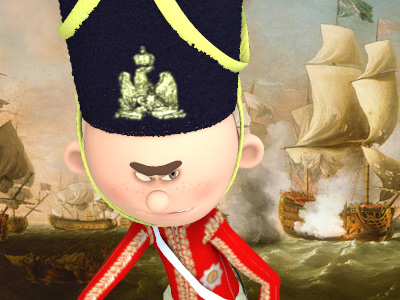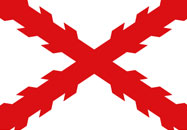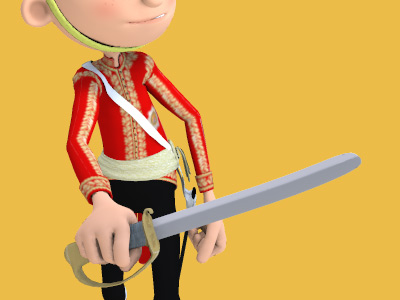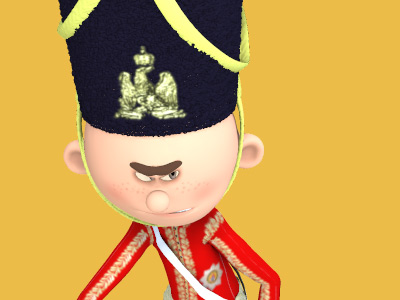War of the Quadruple Alliance (1718–1720)
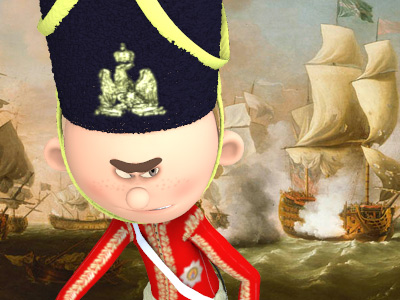
Causes
Charles II of Spain died in 1700 leaving no heirs to succeed him. By his will, he named Philip, Duke of Anjou, grandson of Louis XIV of France, as his successor. This led to the War of the Spanish Succession (1701–1714), at the end of which Philip, Duke of Anjou, was recognized as King Philip V of Spain The Spanish Empire was a colonial empire governed by Spain and its predecessor states between 1492 and 1976. One of the largest empires in history, it was the first to usher the European Age of Discovery and achieve a global scale, controlling vast territory. It was one of the most powerful empires of the early modern period, reaching its maximum extent in the 18th century., but on the condition that he be removed from the French line of succession, thereby ensuring that the French and Spanish crowns would never be united.
The Spanish Empire was a colonial empire governed by Spain and its predecessor states between 1492 and 1976. One of the largest empires in history, it was the first to usher the European Age of Discovery and achieve a global scale, controlling vast territory. It was one of the most powerful empires of the early modern period, reaching its maximum extent in the 18th century., but on the condition that he be removed from the French line of succession, thereby ensuring that the French and Spanish crowns would never be united.
By the Treaty of Utrecht (1713), Spain lost all its possessions in Italy and the Low Countries. The Spanish Netherlands, Duchy of Milan, Naples and Sardinia were given to Emperor Charles VI of Austria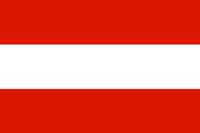 The Archduchy of Austria was a major principality of the Holy Roman Empire and the nucleus of the Habsburg monarchy. With its capital at Vienna, the archduchy was centered at the Empire's southeastern periphery. The archduchy's history as an imperial state ended with the dissolution of the Holy Roman Empire in 1806. It was replaced with the Lower and Upper Austria crown lands of the Austrian Empire., while Sicily was awarded to the Duke of Savoy and Prussia
The Archduchy of Austria was a major principality of the Holy Roman Empire and the nucleus of the Habsburg monarchy. With its capital at Vienna, the archduchy was centered at the Empire's southeastern periphery. The archduchy's history as an imperial state ended with the dissolution of the Holy Roman Empire in 1806. It was replaced with the Lower and Upper Austria crown lands of the Austrian Empire., while Sicily was awarded to the Duke of Savoy and Prussia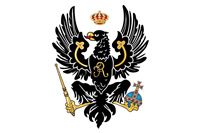 The Kingdom of Prussia was a German kingdom that constituted the state of Prussia between 1701 and 1918. It was the driving force behind the unification of Germany in 1871 and was the leading state of the German Empire until its dissolution in 1918. Although it took its name from the region called Prussia, it was based in the Margraviate of Brandenburg. Its capital was Berlin. received the Spanish Guelders. These lands had been under Spanish Habsburg control for nearly two centuries, and their loss was perceived as a great blow to the country in both practical and prestige terms.
The Kingdom of Prussia was a German kingdom that constituted the state of Prussia between 1701 and 1918. It was the driving force behind the unification of Germany in 1871 and was the leading state of the German Empire until its dissolution in 1918. Although it took its name from the region called Prussia, it was based in the Margraviate of Brandenburg. Its capital was Berlin. received the Spanish Guelders. These lands had been under Spanish Habsburg control for nearly two centuries, and their loss was perceived as a great blow to the country in both practical and prestige terms.
However, the first priority for Spain was the restoration of the country after 13 years of war, which had in part been fought on Spanish territory. The main architect of this operation was Giulio Alberoni. Alberoni was an Italian cardinal and steward of the archbishop of Piacenza. In 1714, Alberoni had arranged the marriage of the widowed Philip V to the 21-year-old Italian Elisabeth Farnese. In the process, Alberoni became the personal adviser of the new queen. In 1715, Alberoni became prime minister and reformed the country's finances. He also initiated the rebuilding of the Spanish fleet (with 50 ships of the line built in 1718 alone) and reformed the army. In 1717, Alberoni became a cardinal in the Roman Catholic Church. The Queen, who had several dynastic claims to advance in Italy, stimulated the Italian ambitions of her husband and their sons, supported by Alberoni.
In France The Kingdom of France is the historiographical name or umbrella term given to various political entities of France in the medieval and early modern period. It was one of the most powerful states in Europe since the High Middle Ages. It was also an early colonial power, with possessions around the world. Colonial conflicts with Great Britain led to the loss of much of its North American holdings by 1763. The Kingdom of France adopted a written constitution in 1791, but the Kingdom was abolished a year later and replaced with the First French Republic., Louis XIV died in 1715 leaving only one infant great-grandchild, Louis XV, as his successor, while Philip V, the only surviving grandchild of Louis XIV, and his sons were excluded from succession to the crown of France by the Treaty of Utrecht.
The Kingdom of France is the historiographical name or umbrella term given to various political entities of France in the medieval and early modern period. It was one of the most powerful states in Europe since the High Middle Ages. It was also an early colonial power, with possessions around the world. Colonial conflicts with Great Britain led to the loss of much of its North American holdings by 1763. The Kingdom of France adopted a written constitution in 1791, but the Kingdom was abolished a year later and replaced with the First French Republic., Louis XIV died in 1715 leaving only one infant great-grandchild, Louis XV, as his successor, while Philip V, the only surviving grandchild of Louis XIV, and his sons were excluded from succession to the crown of France by the Treaty of Utrecht.
Philip V nevertheless claimed the French throne in the event of the death of the infant Louis. Opposition to Philip's ambitions led France (where Louis XIV's nephew, the Duke of Orléans, served as regent), Great Britain The Kingdom of Great Britain was a sovereign country in Western Europe from 1 May 1707 to the end of 31 December 1800. The state was created by the 1706 Treaty of Union and ratified by the Acts of Union 1707, which united the kingdoms of England (which included Wales) and Scotland to form a single kingdom encompassing the whole island of Great Britain and its outlying islands, with the exception of the Isle of Man and the Channel Islands., and the Dutch Republic
The Kingdom of Great Britain was a sovereign country in Western Europe from 1 May 1707 to the end of 31 December 1800. The state was created by the 1706 Treaty of Union and ratified by the Acts of Union 1707, which united the kingdoms of England (which included Wales) and Scotland to form a single kingdom encompassing the whole island of Great Britain and its outlying islands, with the exception of the Isle of Man and the Channel Islands., and the Dutch Republic The Dutch Republic was a confederation that existed from 1579, during the Dutch Revolt, to 1795. It was a predecessor state of the Netherlands and the first fully independent Dutch nation state. Although the state was small and contained only around 1.5 million inhabitants, it controlled a worldwide network of seafaring trade routes. The income from this trade allowed the Dutch Republic to compete militarily against much larger countries. It amassed a huge fleet of 2,000 ships, initially larger than the fleets of England and France combined., to join together in the Triple Alliance on 4 January 1717.
The Dutch Republic was a confederation that existed from 1579, during the Dutch Revolt, to 1795. It was a predecessor state of the Netherlands and the first fully independent Dutch nation state. Although the state was small and contained only around 1.5 million inhabitants, it controlled a worldwide network of seafaring trade routes. The income from this trade allowed the Dutch Republic to compete militarily against much larger countries. It amassed a huge fleet of 2,000 ships, initially larger than the fleets of England and France combined., to join together in the Triple Alliance on 4 January 1717.
Great Britain, in particular, had become very concerned by Spanish ambitions in the Mediterranean Sea and Russian expansion in the Baltic and dispatched fleets to both as a preventative measure. The French navy was badly weakened from the recent war, and could not offer much support.
HISTORY
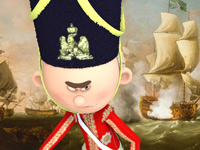
RESOURCES
This article uses material from the Wikipedia article "War of the Quadruple Alliance", which is released under the Creative Commons Attribution-Share-Alike License 3.0.
© Stories Preschool. All Rights Reserved.
